So you want a running watch and cannot figure out which watch to buy. The choices confuse the most informed of runners. Watches continue to be launched with tons of features, and it’s easy to get overwhelmed selecting the right watch, and something I have personally struggled with. I continue to get messages from runners on which running watch to buy, and what usually stands out is that they are not sure about what they need, and are simply asking for advice without that information, not an easy task.
So, I finally sat down and put the proverbial pen to paper. Runner’s identify what features are important to them in a running watch, refer to the watches in this shootout, and quickly be able to figure out which watch cuts it for specially for them. It may not be what every Tom, Dick, or Harry is wearing around your neighborhood, but that’s the exact purpose of this shootout, to help you select something you need.
The biggest challenge for doing this running watch shootout was selecting which watches to shortlist out of the very vast set of units available from a variety of manufacturers. The watches were finally shortlisted based on the below mentioned feature set. GPS capability was a must, since the primary focus of this article was runner’s watch shootout. Price was an important consideration which eliminated a few high end products from the shootout.
| Shortlisted Features | ||
|---|---|---|
| GPS | On-board Music | Multi-sport support |
| HR, 24 hours HR | Interval Training | Battery |
| Notifications | Color screen | Activity tracking support |
Based on the feature set above, the following watches were shortlisted. Not every watch meets all the requirements, in fact, none of them do. But these watches surely meet a majority of these features, and provide users an opportunity to select the running watch as per their requirements, and not what the manufacturer would like to sell to you. So, here you go, straight on with the shootout, without wasting any further time, and see how the selected watches did.
| Shortlisted Watches | ||
|---|---|---|
| Garmin FR235 | TomTom Spark 3 | FitBit Surge |
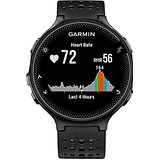 | 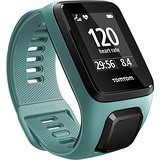 | 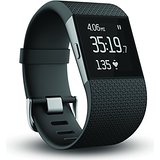 |
| Garmin FR35 | Apple Watch 2 | |
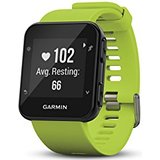 | 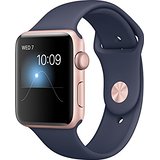 | |
| Garmin VivoActive HR | Pebble Time 2 | |
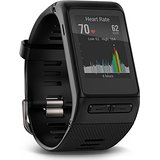 | 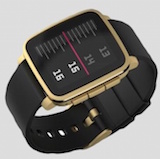 |
Runner’s Watch Shootout: Results

Detailed Result Analysis
GPS: What’s a runner’s watch without GPS? We shortlisted only those popular models which had this as standard. Several other popular models like FitBit Blaze, or the Garmin Vivosmart HR may have most of the tracked feature set, but without GPS, the accelerometer based distance measurement simply does not cut it for pace/distance accuracy for runners. Pebble Time 2 depends on the additional clip-on Pebble Core for GPS access, a separate device which is expected to go to retail at $100 in Jan 2017, along with the Pebble Time 2 which will start selling at $200 this December.
HR: 24×7 hours HR enables continuous monitoring of your heart rate, which also enables you to track your resting heart rate (RHR), an important metric to check our current fitness levels. Things are looking good here with most of the watches, with continuous 24×7 heart rate monitoring and display quickly becoming the norm. Surprisingly, two of the newest models here, the TomTom Spark 2/3 or the Apple Watch 2 both lack this. Apple Watch 2 has a heart rate monitoring app and the sensor is activated only when the app is loaded (or a workout app is turned on).
Phone Notifications: As watches continue to become smarter, leading to overlapping of feature sets between a typical runner’s watch and a smartwatch, the expectations are higher to have your running watch phone notifications enabled (calls, text, other app notifications), and be able to wear it through the day. The running watch manufacturers have responded with getting notifications to your watch. TomTom Spark is the only model which does not support this (though rumors about a software update to enable this have persisted since 2015, but remain to be materialized).
On-Board Music: This remains a niche feature limited to just a few running watches. Note that we are talking about onboard music capability which can be used by runners to load their songs on the watch and listen via bluetooth headsets and not having to carry their phone around for the same. TomTom Spark has been one of the pioneers here with 3GB onboard music. Pebble Time 2 will once again depend on Pebble Core to bring along this feature, though it will have a wider collection of choices, with 4GB onboard storage, and options of streaming music online directly via a sim card on the Core, supporting Spotify, Amazon Alexa, and other services. Apple Watch 2 is also in on the game with 2GB onboard storage for music.
Interval Training: Serious runners need interval training support in their watches, the ability to do repeating workouts of the kind like 400m repeats with 2 mins rest, or other combinations of distance and time. Many runners also require support for custom intervals which may not be as simple as a repeating sequence of work/rest interval, but different distances or time for each interval (think ladder intervals). Only Garmin FR235 has full basic + custom interval support here. Other watches have basic interval support while Garmin Vivoactive HR and FitBit Surge do not have interval capabilities.
Screen display and Color: To be used as your regular all day watch, it needs to look good, and a bright, sharp display, along with support for colors goes a long way to make that happen. Most of the typical running watches are more focussed on functionality over form, but this too is changing gradually. We no longer see those bulky alienish looking watches any more. Sleeker watches are in (even with compromise in battery life due to size constraints), and the displays are getting better. Apple Watch 2, Garmin FR235 and Pebble 2 take the lead here, with nice color displays, ability to customize screens with watchfaces and widgets, and color screens. Vivoactive HR is the cheapest one with color display support. Rest of the watches are monochrome, with simple, functional looks.
Multi-sport Support: Cycling and swimming support is demanded by runners, who look at them as tools for cross-training. We are not talking about full triathlon support with transitions here, but meeting the basic needs of tracking for these sports. All watches listed here support bike rides. Support for swimming is however a bit limited here, since that brings in additional hardware and design complications to keep things working in water. Garmin FR235, FR35 as well as FitBit Surge are not designed for swimming.
Activity Tracking: All watches here support the basic activity tracking feature. Steps, sleep tracking, calories, its all there. Not really the most desired feature for a typical runner, but more like a good to have to keep up to date on how active we have been through the day.
Battery: 10-13 hours with GPS (with 24 hours HR if applicable) seems to be the norm for most of the watches here. Basic time display and activity tracking, notifications etc can get these watches from a week to up to 3 weeks. The significant exception here is the Apple Watch 2 here, with a meager 5 hours GPS support, and a day as your regular smartwatch. What that essentially means is that if you take it out for say an hour training run, you would barely be just be able to make it through your day. If you are looking at running more, like a half marathon or a marathon, well that will mean the watch will need to be charged again before the end of your day. For runners who are not that fast (slower than a 4 hour marathon), well, they may risk not having their activity recorded completely, or unable to make calls right after the run with no battery juice left, not a very inspiring thought when you would be running.
Price: With an entry level price point being $250 for most watches here, most of the watches reside in the middle to high end price bracket. Garmin FR35 provides great value at a reasonable $200. The two best looking watches here, the Apple Watch 2 ($369) and Garmin FR235 ($320) are the priciest. The Pebble Time 2 is the odd one out here, since you have to essentially buy 2 devices to get the required capabilities, with the watch itself at $200 and the Pebble Core, which provides GPS and Music support at another $100.
Where to Buy?
I hope this article was able to help you identify the right runners watch for you. You can use the below links to buy your choice online from Amazon store (US and India links provided), or from the Apple or Pebble stores (linked below). TomTom Spark 3 is not yet available in India and so the original Spark link is shared below (functionally similar for this features shootout).
Please share your feedback and any comments below.
Leave a Reply